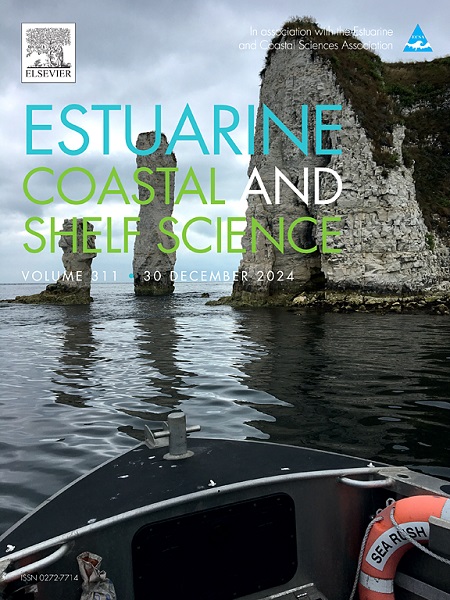Conditions for vegetative propagation of three key halophytes from habitats of EU community interest: substrate nature, salinity and PGP-bacterial interactions and cost evaluation
IF 2.6
3区 地球科学
Q1 MARINE & FRESHWATER BIOLOGY
引用次数: 0
Abstract
The ecological transition faces the challenge of expanding wetland restoration areas due to their critical role in ecosystem service provision. To improve restoration efforts, particularly in plant material production for revegetation, scientific knowledge is essential. This study focuses on establishing optimal vegetative propagation protocols for three slow-growing, perennial halophyte species from EU habitats of interest: Atriplex portulacoides, Arthrocaulon macrostachyum and Sporobolus maritimus. Cuttings were grown in three substrates (perlite, coconut fiber and mulch) with two salinity levels (0 and 171 mM NaCl) and three inoculation treatments (non-inoculated and inoculated with two plant growth-promoting (PGP) rhizobacteria consortia). Cuttings survival rate was species-specific, with A. portulacoides showing the highest survival range (78.75 ± 18.75) compared to the ranges observed for A. macrostachyum and S. maritimus (57.50 ± 12.50 % and 59.60 ± 9.00 %, respectively). Plants grown with coconut fiber performed best survival rate, followed by perlite independently of inoculation. Moreover, survival rates of S. maritimus were also enhanced by PGP inoculation. Similar patterns were observed for cutting development: cuttings grown in perlite, followed by coconut fiber, and exposed to high salinity showed higher above- and belowground biomass. By selecting this Substrate and Salinity, Inoculum had a positive effect on the development of A. portulacoides and A. macrostachyum. Furthermore, inoculated plants showed overall higher values of photosynthetic efficiency and carboxylation. Finally, a cost analysis comparing our approach to using direct transplant material indicates significant economic advantages. Our results provide compelling evidence to enhance nursery stock for future revegetation projects.
三种主要盐生植物无性繁殖的条件:基质性质、盐度和pgp -细菌相互作用以及成本评估
由于湿地在提供生态系统服务方面的关键作用,生态转型面临着扩大湿地恢复面积的挑战。要改进恢复工作,特别是重新植被的植物材料生产,科学知识至关重要。本研究的重点是为欧盟相关栖息地的三种生长缓慢的多年生卤叶植物物种制定最佳无性繁殖方案:这三个物种是:Atriplex portulacoides、Arthrocaulon macrostachyum 和 Sporobolus maritimus。插条在三种基质(珍珠岩、椰子纤维和地膜)中生长,有两种盐度水平(0 和 171 mM NaCl)和三种接种处理(未接种和接种两种植物生长促进(PGP)根瘤菌群)。扦插成活率因物种而异,A. portulacoides 的成活率最高(78.75 ± 18.75),而 A. macrostachyum 和 S. maritimus 的成活率分别为 57.50 ± 12.50 % 和 59.60 ± 9.00 %。使用椰子纤维栽培的植物存活率最高,其次是珍珠岩,与接种无关。此外,接种 PGP 也提高了海洋蓟马的存活率。在扦插发育方面也观察到类似的模式:在珍珠岩中生长的插条,其次是椰子纤维,暴露在高盐度下的插条显示出更高的地上和地下生物量。通过选择基质和盐度,接种体对 A. portulacoides 和 A. macrostachyum 的生长发育有积极影响。此外,接种植物的光合作用效率和羧化作用值总体较高。最后,成本分析表明,将我们的方法与使用直接移植材料进行比较具有显著的经济优势。我们的研究结果为提高未来植被重建项目的苗圃存量提供了令人信服的证据。
本文章由计算机程序翻译,如有差异,请以英文原文为准。
求助全文
约1分钟内获得全文
求助全文
来源期刊
CiteScore
5.60
自引率
7.10%
发文量
374
审稿时长
9 months
期刊介绍:
Estuarine, Coastal and Shelf Science is an international multidisciplinary journal devoted to the analysis of saline water phenomena ranging from the outer edge of the continental shelf to the upper limits of the tidal zone. The journal provides a unique forum, unifying the multidisciplinary approaches to the study of the oceanography of estuaries, coastal zones, and continental shelf seas. It features original research papers, review papers and short communications treating such disciplines as zoology, botany, geology, sedimentology, physical oceanography.

 求助内容:
求助内容: 应助结果提醒方式:
应助结果提醒方式:


